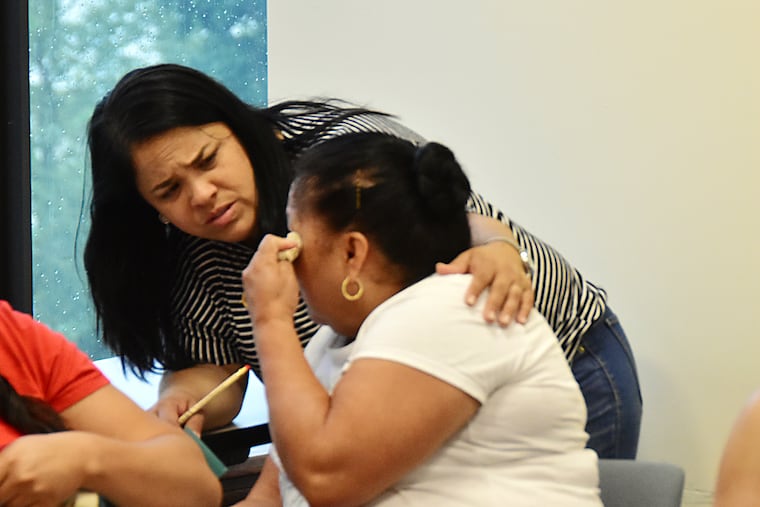A new kind of union emerges for lower paid workers across the U.S.
The overarching goal is to build power to influence government policies that help all workers.

In Upstate New York, immigrant dairy hands lobbied the state to amend its labor laws so people who milk cows could rely on the minimum wage and overtime.
In Dallas, after an immigrant construction worker died of heat stroke, day laborers and non-union building trades workers persuaded the city to pass an ordinance requiring rest breaks.
In Philadelphia and in other cities and states around the nation, housekeepers and nannies pushed for legislation governing pay and work rules for domestic workers who have virtually no rights under existing labor laws.
Even as participation in traditional labor unions has declined, a new type of worker group is emerging across the United States and in Philadelphia, adding energy and diverse voices to the labor movement. These groups, numbering about 250 nationwide, have various names and organizational structures, but collectively they are known as worker centers.
For more than 15 years, Jane M. Von Bergen covered labor at The Inquirer. After retiring in 2017, she spent the last three years writing a book on this growing and vibrant force in the labor movement. Coauthored by occupational and public health expert Celeste Monforton, On the Job: The Untold Story of Worker Centers and the New Fight for Wages, Dignity was published by the New Press in May.
We asked her to tell us about worker centers and her book.
Question: What is a worker center?
Answer: The broad definition of the labor movement is workers acting together to improve working conditions and that’s what these groups do. Worker centers gather people with common interests or a common background and exert pressure to influence larger policy changes,
Q: What do worker centers do?
A: Through alliances with lawyers and other professionals, worker centers can help individuals recover money when they are cheated out of pay or get them medical treatment when they are injured at work. But the overarching goal is to build power to influence government policies that help all workers. These include anti-wage theft measures, mandated paid sick leave, and disclosure of hazardous chemicals that may be used on the job.
Q: Can’t they get help from unions?
A: Not exactly. Through collective bargaining agreements, unions help employees in stable employment situations, such as hospitals or factories. But many worker center members are marginalized. They are hard to unionize. Some are temps working for different agencies every day, or are housekeepers cleaning multiple homes. Some are day laborers hired off the corner. Some speak other languages. The Greater Minnesota Worker Center in St. Cloud, for example, represents Somalian poultry plant workers and New Labor’s members in New Brunswick, N.J., primarily speak Spanish.
Q: How are they funded?
A: Some charge monthly dues, but most funding comes from foundations and faith groups. Sometimes local unions will provide support, and some get funding from OSHA for worker-safety training. In Texas, the Centro de Derechos Laborales sold tortillas to make rent on their office in a former beauty parlor.
Q: Are there worker centers here?
A: This movement is beginning to take hold in Philadelphia. We have many groups, with some including worker advocacy as part of their overall missions. So far, only the Restaurant Opportunities Center has gotten as far as having its own office and staff. However, Philadelphia is good at coalition building. The Coalition to Respect Every Worker, comprised of One Pennsylvania, the Pennsylvania Domestic Workers Alliance, Juntos, VietLead, Make the Road, and other groups lobbied effectively for a better-funded city office to enforce recently enacted labor ordinances such as the Fair Workweek Act. The Black Workers Project is building its organization with an initial focus on Black temp workers. The Asian Pacific American Labor Alliance is also in the process of organizing.
Q: What are worker centers’ strengths and weaknesses?
A: Their chief strength is their ability to engage workers on a grassroots level, harnessing worker power to build alliances for policy changes. For immigrant workers in particular, these centers become a second family to help navigate life away from home. A chief weakness? Precarious funding leading to leadership burnout.
Q: As a longtime labor writer, what did you learn when you and your coauthor visited centers from California to Boston?
A: I gained a deeper understanding of some of the challenges faced by immigrant workers in general. Learning about life on dairy farms was eye-opening. Some dairy hands work four hours on and four hours off. They never get a full night’s sleep. In poultry plants, line speeds move so fast that workers can’t get a bathroom break. They wear diapers. That blew my mind.
Q: What else struck you?
A: It was inspiring to see how people united, could improve their lives. At a minimum, people need to be paid for their work and they need to be safe on the job. It made me sad to learn it takes so much effort to get these most basic protections for workers.
.